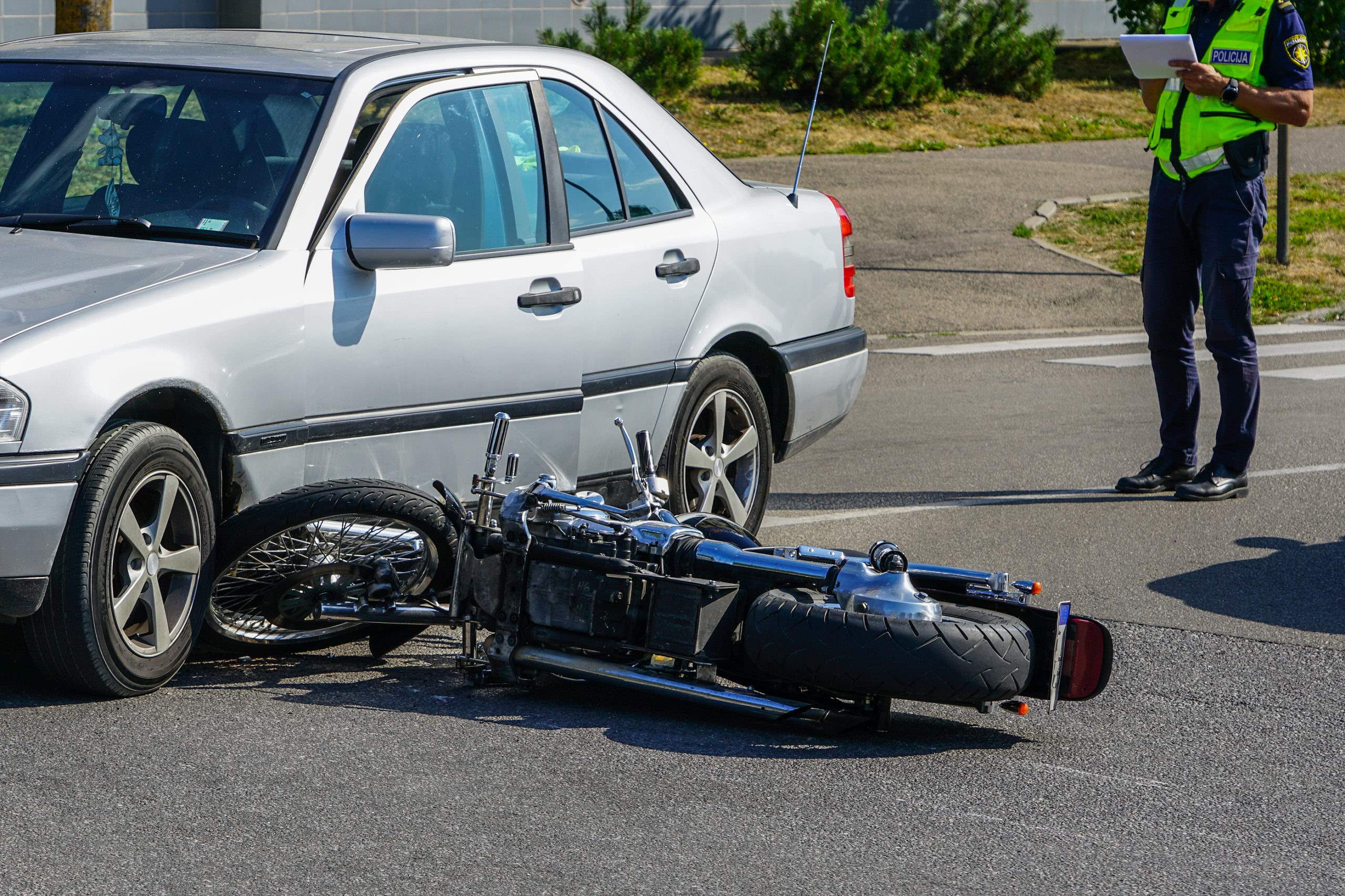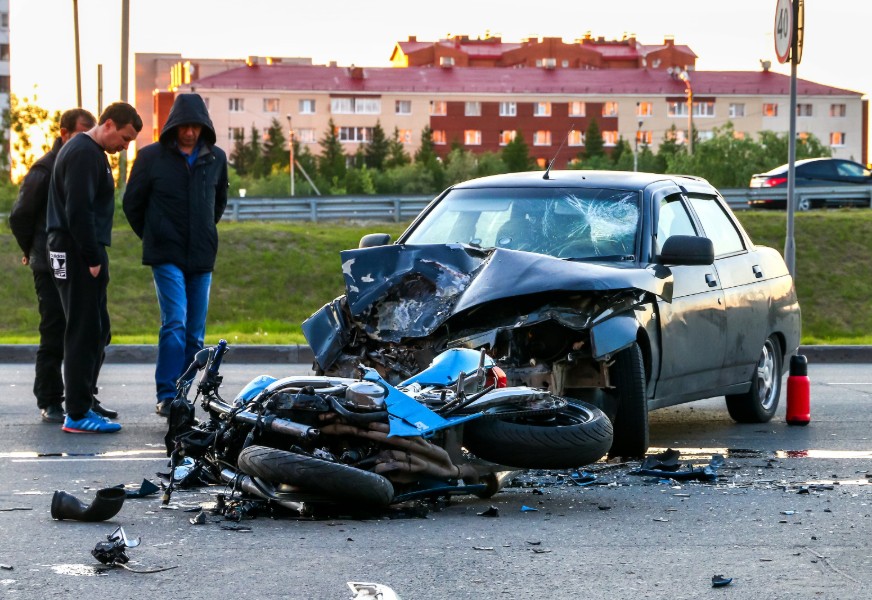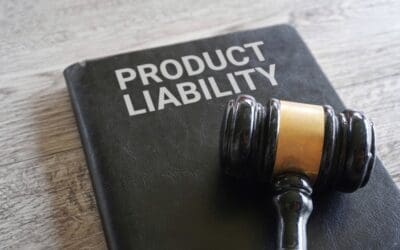You wear a helmet, follow Florida traffic laws, and carry motorcycle insurance, yet you still may not be fully protected after a crash. Florida’s no-fault system does not apply to motorcyclists, so riders are excluded from Personal Injury Protection that pays medical bills regardless of fault. That means a no-fault law motorcycle accident in Florida often leaves injured riders paying upfront for treatment, missing paychecks, and fighting insurers for recovery.
In 2022, Florida recorded 8,649 motorcycle crashes and 600 motorcyclist fatalities, with thousands more seriously injured, according to the Florida Department of Highway Safety and Motor Vehicles Crash Facts 2022. The agency also confirms that PIP is required only for vehicles with four wheels, not motorcycles. The National Highway Traffic Safety Administration reports that hospital charges for motorcyclists are typically higher due to the more severe injuries they often sustain.
After a no-fault law motorcycle accident in Florida, you must rely on the at-fault driver’s bodily injury coverage, your health insurance, and any optional coverages you purchased, such as uninsured or underinsured motorist protection and medical payments coverage.
Suppose those policies are limited or the other driver is uninsured. In that case, the financial gap can be life-changing, which is why understanding these coverage gaps and acting quickly to preserve evidence, document injuries, and pursue all available insurance sources can make the difference between overwhelming debt and a fair settlement.

Key Takeaways
- Motorcyclists are exempt from Florida’s no-fault Personal Injury Protection (PIP) coverage, unlike car and truck drivers.
- Without PIP, motorcyclists must prove the other driver’s negligence to recover damages from their insurance company.
- Florida’s comparative fault rules can reduce compensation based on the motorcyclist’s percentage of fault in the accident.
- Motorcyclists face higher financial risks and should consider extensive voluntary insurance coverage for adequate protection.
- Legal representation is crucial due to the complexity of liability determinations and insurance companies’ tendency to minimize motorcycle claim payouts.
Understanding Florida’s No-Fault Insurance System for Motor Vehicles
How does Florida’s no-fault insurance system work, and why doesn’t it protect you as a motorcyclist? Personal Injury Protection, or PIP, requires most four-wheeled motorists to carry coverage for medical expenses and lost wages regardless of who caused the crash. This setup provides quick access to basic benefits without proving fault, but it does not apply to motorcycles. That is why a no-fault law motorcycle accident in Florida does not unlock automatic PIP payments for injured riders.
As a motorcyclist, you are excluded from these benefits, which is a common misconception many riders discover only after a crash. Despite higher injury risks for riders documented in statewide crash data, lawmakers have not extended no-fault to motorcycles.
The result is a coverage gap that prompts you to rely on health insurance, optional coverages such as MedPay, or uninsured or underinsured motorist policies, or to pursue a liability claim against the at-fault driver. Because you must prove negligence instead of receiving automatic PIP benefits, understanding these rules after a no-fault law motorcycle accident in Florida is critical to protecting your finances.
3 Reasons Why Motorcycles Are Exempt From Florida’s PIP Requirements

1) PIP Is Limited to Four-Wheeled Vehicles Under Florida Law
Florida’s no-fault system defines who must carry Personal Injury Protection by vehicle type. By statute, PIP applies to vehicles with four wheels, not to two-wheeled motorcycles. As a result, after a no-fault law motorcycle accident in Florida, riders cannot access automatic PIP benefits for medical bills or lost wages. They must look to other sources of coverage.
2) Motorcycle Injuries Tend To Be More Severe and Costly
Lawmakers designed PIP for quick, limited benefits. Motorcycle crashes often involve higher-speed impacts and little physical protection, which leads to more severe injuries and higher medical costs. Because PIP caps benefits, extending it to motorcycles would not cover typical rider losses and could strain the system without providing meaningful protection to riders after a no-fault law motorcycle accident in Florida.
3) Policy Design and Risk Allocation Choices by the Legislature
Florida’s insurance framework reflects policy choices about risk and cost. The legislature chose to keep PIP focused on common auto claims and to leave motorcyclists to manage risk through other tools such as health insurance, MedPay, and uninsured or underinsured motorist coverage. This structure shifts motorcycle claims into a fault-based system, requiring riders to pursue the at-fault driver and prove negligence, rather than relying on PIP.
How the Absence of No-Fault Coverage Affects Motorcycle Riders
Without PIP, a no-fault law motorcycle accident in Florida puts the burden on you to prove the other driver’s negligence before you see a dime. Medical bills start right away, there is no instant PIP cushion, and your recovery depends on the at-fault driver’s policy limits or your own optional coverages like MedPay and uninsured or underinsured motorist insurance.
This gap also changes the personal injury claim process. You must document injuries, preserve evidence, and navigate liability negotiations instead of receiving automatic benefits. If coverage is low or the driver is uninsured, the personal injury claim process can be more challenging and longer, which is why riders should plan. After a no-fault law motorcycle accident in Florida, preparation can be the difference between manageable bills and overwhelming debt.
Pursuing Direct Claims Against At-Fault Drivers in Motorcycle Accidents
 Since Florida’s no-fault law doesn’t protect you as a motorcyclist, you’ll need to pursue compensation directly from the at-fault driver’s insurance company or through litigation. This process requires proving that the other driver’s negligence caused your accident and injuries.
Since Florida’s no-fault law doesn’t protect you as a motorcyclist, you’ll need to pursue compensation directly from the at-fault driver’s insurance company or through litigation. This process requires proving that the other driver’s negligence caused your accident and injuries.
- Seek medical attention and contact law enforcement to initiate the official crash report process.
- Document the scene and preserve evidence, including photographs, witness information, medical records, and damaged equipment.
- Notify insurers and establish liability using the police report, witness statements, and physical evidence after a no-fault law motorcycle accident in Florida.
- Calculate damages and identify all insurance coverage, then send a comprehensive demand package.
- Negotiate, track deadlines, and file suit if necessary to move the personal injury claim process forward and protect your rights throughout the personal injury claim process.
Florida’s Comparative Fault Rules and Their Impact on Motorcycle Claims
When Florida courts determine compensation in motorcycle accidents, they apply comparative fault rules that can reduce your recovery based on your percentage of responsibility for the crash. Under Florida’s modified comparative fault system, you cannot recover damages if you are more than 50% at fault, which can significantly affect motorcyclists bringing direct claims.
Understanding how these rules affect your claim is essential:
- Motorcycle safety violations, such as speeding or making improper lane changes, can increase your percentage of fault.
- Courts and insurers may assign higher fault to riders due to bias, so clear evidence is critical.
- Insurance options matter because you are pursuing direct claims against at-fault drivers after a no-fault law motorcycle accident in Florida.
- Completing a rider education and safety course can demonstrate responsibility and may help reduce your assigned fault.
An experienced personal injury attorney can gather evidence, challenge unfair fault assignments, and protect your recovery.
The 50% Fault Threshold and What It Means for Recovery
Florida’s modified comparative fault system creates a hard line at 50% responsibility that can completely bar your recovery in a motorcycle accident claim. If you’re found 51% at fault, you lose everything regardless of your injuries’ severity or the other party’s negligence.
| Your Fault Percentage | Injury Compensation Available | Your Legal Rights |
|---|---|---|
| 0-25% | Full recovery minus your fault | Strong position |
| 26-49% | Reduced but significant recovery | Protected rights |
| 50%+ | Zero compensation | No recovery allowed |
This threshold makes motorcycle safety and accident prevention essential. Understanding your insurance options becomes critical, as you can’t rely solely on no-fault protection. Every detail matters when proving the other party bears primary responsibility. Strategic legal representation guarantees you stay below that devastating 50% mark, protecting your right to fair compensation.
5 Challenges When the At-Fault Driver Has No Insurance

1. Proving Asset-Based Recovery Options
When the at-fault driver is uninsured, you may explore post-judgment remedies like wage garnishment or liens on non-exempt property. Florida’s head-of-household and homestead protections can limit what you can actually collect. Evaluating exemptions early saves time and legal costs. A targeted asset search helps you decide whether to pursue judgment enforcement or focus on insurance-driven avenues.
2. UM/UIM Coverage Traps and Notice Requirements
Uninsured motorist benefits can be helpful, but policies often require prompt notice and strict proof of the other driver’s lack of coverage. Missing a notice deadline can jeopardize payment even after a no-fault law motorcycle accident in Florida. Some policies also require consent before you settle with any party. Reading your declarations page and endorsements closely prevents avoidable denials.
3. Evidence Preservation Beyond the Crash Scene
With no opposing insurer pushing an investigation, key evidence can disappear if you do not act. Securing event data recorder downloads from involved vehicles, requesting nearby business footage, and issuing preservation letters can fill critical gaps. Expert inspections of roadway design or sightlines can uncover third-party responsibility. These steps build leverage when traditional liability insurance is absent.
4. Medical Provider Relations and Care Continuity
Providers may hesitate to offer extended treatment without predictable reimbursement sources. Letter-of-protection arrangements, coordinated scheduling, and transparent updates about case progress can keep care on track. Clear communication about anticipated UM benefits or other payers reassures clinics. This proactive approach supports both recovery and valuation without relying solely on PIP frameworks.
5. Tax and Financial Planning Around Lump-Sum Recoveries
If you secure funds through UM settlements or judgment payments, planning how and when to receive money matters. While most personal injury settlement proceeds for physical injuries are not taxable, interest and some wage components can be. Structuring payouts or considering structured settlements can protect benefits eligibility and manage long-term needs. Thoughtful planning after a no-fault law motorcycle accident in Florida helps preserve your recovery’s real value.
Why Legal Representation Is Critical for Motorcycle Accident Victims
You are up against insurance companies that know the system better than anyone. A good lawyer levels the field. They gather the proper evidence, work with experts who understand motorcycles, and explain your injuries and losses in a way insurers and juries respect. After a no-fault law motorcycle accident in Florida, this can be the difference between a small offer and real compensation.
You also save time and stress. Your lawyer handles calls, forms, deadlines, and negotiations while you focus on healing. They find every possible source of coverage, reduce medical liens, and prepare your case for trial if needed, so insurers take you seriously. After a no-fault law motorcycle accident in Florida, having a pro in your corner gives you confidence and a clear plan to move forward.
Conclusion: Turning a No-Fault Law Motorcycle Accident in Florida Into a Strong Claim
Riding in Florida means planning for gaps that other drivers never face. After a no-fault law motorcycle accident in Florida, you cannot tap PIP, so your recovery depends on proving fault, documenting losses, and pursuing every available policy. With the right strategy and timely action, you can turn a challenging situation into a strong claim.
Do not go it alone. An experienced motorcycle injury attorney can protect your rights, counter insurance tactics, and present the evidence that leads to a favorable outcome. After a no-fault law motorcycle accident in Florida, the right legal team helps you move from uncertainty to a fair result.



